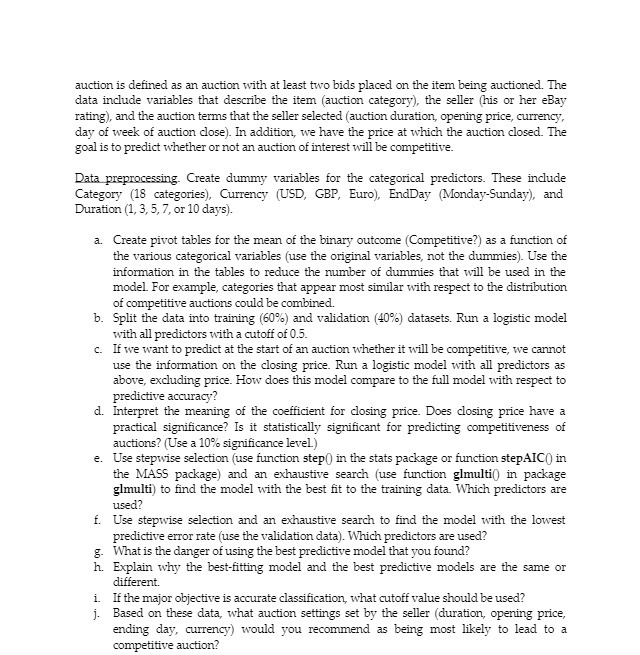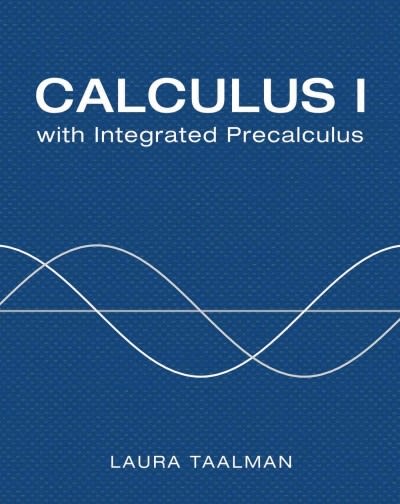auction is defined as an auction with at least two bids placed on the item being auctioned. The data include variables that describe the item (auction category), the seller (his or her eBay rating), and the auction terms that the seller selected (auction duration, opening price, currency, day of week of auction close). In addition, we have the price at which the auction closed. The goal is to predict whether or not an auction of interest will be competitive. Data preprocessing. Create dummy variables for the categorical predictors. These include Category (18 categories), Currency (USD, GBP, Euro), EndDay (Monday-Sunday), and Duration (1, 3, 5, 7, or 10 days). a. Create pivot tables for the mean of the binary outcome (Competitive?) as a function of the various categorical variables (use the original variables, not the dummies). Use the information in the tables to reduce the number of dummies that will be used in the model For example, categories that appear most similar with respect to the distribution of competitive auctions could be combined b. Split the data into training (60%) and validation (40%) datasets. Run a logistic model with all predictors with a cutoff of 0.5. C. If we want to predict at the start of an auction whether it will be competitive, we cannot use the information on the closing price. Run a logistic model with all predictors as above, excluding price. How does this model compare to the full model with respect to predictive accuracy? Interpret the meaning of the coefficient for closing price. Does closing price have a practical significance? Is it statistically significant for predicting competitiveness of auctions? (Use a 10% significance level) e. Use stepwise selection (use function step() in the stats package or function stepAIC() in the MASS package) and an exhaustive search (use function glmulti() in package glmulti) to find the model with the best fit to the training data Which predictors are used? f. Use stepwise selection and an exhaustive search to find the model with the lowest predictive error rate (use the validation data). Which predictors are used? g. What is the danger of using the best predictive model that you found? h. Explain why the best-fitting model and the best predictive models are the same or different. If the major objective is accurate classification, what cutoff value should be used? j- Based on these data, what auction settings set by the seller (duration, opening price, ending day, currency) would you recommend as being most likely to lead to a competitive auction







